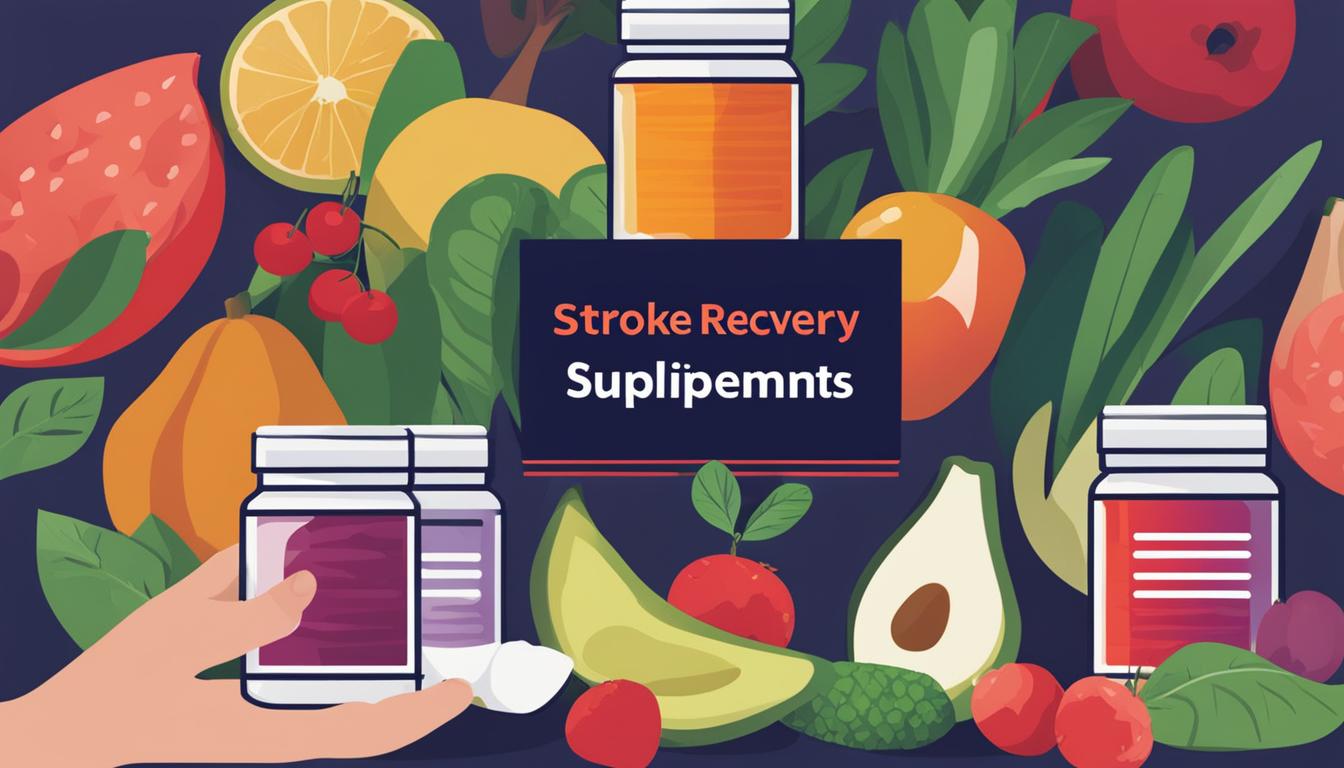Age is a critical factor in stroke rehabilitation outcomes, similar to a conductor leading a symphony.
As we observe the intricate dance between age and recovery, nuances emerge that shape the journey post-stroke.
Understanding how age impacts recovery trajectories unveils a tapestry of complexities that demand our attention.
By unraveling the interplay between age and rehabilitation, we can unlock pathways to tailored interventions that hold the key to enhancing recovery potential.
Join us as we explore the impact of age on stroke recovery, unveiling insights that may reshape our approach to rehabilitation strategies.
Key Takeaways
- Age impacts stroke recovery trajectory
- Significant gains in muscle strength
- Cognitive function improves in younger patients
- Tailored rehabilitation plans crucial
Age-related Factors in Stroke Recovery
In stroke recovery research, age emerges as a critical determinant influencing functional outcomes post-stroke, with distinct patterns observed in patients below 70 years compared to those aged 70 years and above.
Younger patients, specifically those aged 20-69 years, demonstrate improved function up to 6 months post-stroke, marked by significant enhancements in motor deficit and cognitive function during this period. The Modified Barthel Index (MBI) scores show a notable increase until 6 months post-stroke for patients below 70 years; however, a decline is noted between 6 and 30 months for individuals aged 70 years and above.
Muscle strength, a vital component of functional recovery, typically shows improvements within 3 to 6 months after stroke onset, with substantial gains in muscle strength observed up to 6 months in patients below 70 years old.
Understanding these age-related factors is crucial for tailoring effective stroke rehabilitation strategies to optimize outcomes for different age groups.
Impact of Age on Rehabilitation Progress

Age significantly influences the trajectory of rehabilitation progress following a stroke, impacting functional outcomes and recovery patterns in distinct age groups.
Patients aged below 70 years tend to exhibit substantial improvements in motor deficit and cognitive function within the first 6 months post-stroke. Functional outcomes, as measured by tools like the Modified Barthel Index and Medical Research Council scores, show continuous enhancement during this period for patients in this age group. Cognitive dysfunction in younger patients also sees significant advancements until the 6-month mark, beyond which the improvements plateau.
Conversely, individuals aged 70 years and above may face a decline in Modified Barthel Index scores between 6 and 30 months post-stroke. It's evident that age plays a pivotal role in determining the rate and extent of functional recovery post-stroke, showcasing notable variations across different age brackets.
- Patients <70 years show significant improvement in motor deficit and cognitive function up to 6 months post-stroke.
- Functional outcomes continue to increase until 6 months post-stroke for patients <70 years.
- Cognitive dysfunction in younger patients improves significantly until 6 months post-stroke.
- Patients ≥70 years may experience a decline in Modified Barthel Index scores between 6 and 30 months post-stroke.
- Age is crucial in determining the rate and extent of functional recovery post-stroke.
Age Considerations in Stroke Recovery Plans
Considering the impact of age on stroke recovery trajectories, our focus now shifts to outlining key age considerations essential in formulating comprehensive stroke recovery plans. Age-related differences significantly influence functional outcomes post-stroke, requiring tailored approaches in stroke rehabilitation planning. Below is a table summarizing age considerations in stroke recovery plans:
| Age Group | Recovery Trajectory | Functional Outcomes |
|---|---|---|
| < 70 years | Improved function until 6 months post-stroke | Significant improvements in motor deficit |
| ≥ 70 years | Functional decline after 6 months post-stroke | Varied improvements in cognitive function |
| 20-69 years | Significant improvements in functional outcomes | Crucial role of age in determining recovery |
Understanding these age-related differences is imperative for optimizing patient care and enhancing stroke rehabilitation outcomes. Tailoring recovery plans to address age-specific needs can lead to better functional recovery post-stroke, ultimately improving the overall quality of life for patients.
Addressing Age-related Challenges in Recovery

Exploring the impact of age on recovery challenges post-stroke reveals significant variations in functional outcomes among different age groups. Patients aged <70 years often experience improved function until 6 months post-stroke, whereas those aged ≥70 years may face functional decline beyond this period. Younger patients typically exhibit more significant motor deficit improvement within the first 6 months compared to older patients. Cognitive function tends to enhance until the 6-month mark in patients aged <70 years, underscoring age's influence on functional recovery.
Age-specific considerations play a pivotal role in stroke rehabilitation planning, with individuals aged 20-69 years demonstrating notable functional enhancements over time. Understanding age-related effects on recovery is crucial for tailoring interventions effectively, as age impacts both the rate and extent of functional recovery post-stroke.
- Recovery of activities of daily living (ADL) varies significantly across different age groups.
- Age-specific considerations are essential in designing tailored stroke rehabilitation plans.
- Motor deficit improvement post-stroke is more pronounced in younger patients.
- Cognitive function tends to improve until 6 months post-stroke in patients aged <70 years.
- Functional decline post-stroke may be more prevalent in individuals aged 70 years and above.
Optimizing Outcomes Across Age Groups
To optimize outcomes across different age groups in stroke recovery, the analysis must focus on tailored rehabilitation plans that consider age-specific functional improvements and challenges. Younger patients, typically aged under 70 years, often exhibit enhanced motor deficit recovery within the first 6 months post-stroke, leading to significant improvements in overall functional recovery. Moreover, cognitive function tends to show positive progress until 6 months post-stroke in younger patients, underscoring the importance of age-specific considerations in treatment planning.
Understanding these age-related dynamics is crucial for maximizing clinical outcomes in stroke survivors. Patients between 20-69 years old demonstrate marked advancements in various functional outcomes over time, emphasizing the need for targeted interventions based on age brackets. Conversely, older patients aged 70-89 years may experience more varied changes in functional recovery trajectories post-stroke, necessitating nuanced approaches to rehabilitation.
Frequently Asked Questions
What Is the Average Life Expectancy After a Stroke?
In general, the average life expectancy after a stroke can vary based on multiple factors like age, overall health, and the severity of the stroke. Survival rates tend to decrease significantly in the initial months following a stroke.
Long-term life expectancy post-stroke can be influenced by complications, comorbidities, and the effectiveness of rehabilitation and ongoing care. Various factors such as recurrent strokes and severe disabilities post-stroke may impact life expectancy.
Can an 80 Year Old Recover From a Stroke?
Absolutely, an 80-year-old can indeed recover from a stroke. With determination and tailored rehabilitation strategies, significant progress is achievable. Support from caregivers and healthcare providers plays a crucial role in this journey. In addition to medical treatment, incorporating various therapies such as physical, occupational, and speech therapy can greatly enhance the recovery process. Family involvement and emotional support can also motivate the individual to stay engaged and committed to their rehabilitation plan. For those looking for specialized insights, be sure to explore stroke recovery tips for elderly cats, as similar principles of care and support may apply across different age groups and species.
While each individual's recovery path may vary, proper care and encouragement can lead to positive outcomes. Age shouldn't limit one's potential for improvement and recovery post-stroke.
What Is the Hardest Stroke to Recover From?
Recovering from a hemorrhagic stroke can be particularly challenging due to the potential for severe brain damage. This type of stroke may require longer hospital stays, intensive rehabilitation, and carries a higher risk of disability compared to other strokes.
Factors like the location and extent of bleeding in the brain influence functional outcomes and quality of life. Hemorrhagic strokes are associated with higher mortality rates and a greater likelihood of long-term disability.
What Percentage of Stroke Patients Make a Full Recovery?
We're pleased to share that approximately 10% of stroke patients achieve a full recovery without lasting disabilities. This statistic reflects the resilience and potential for successful outcomes in stroke rehabilitation.
While each individual's journey is unique, this data underscores the possibility of attaining a full recovery post-stroke. This encouraging figure highlights the importance of tailored care, rehabilitation, and ongoing support in maximizing recovery potential for stroke survivors.
Conclusion
In conclusion, age plays a significant role in stroke recovery, with younger patients often experiencing better functional outcomes within the first 6 months post-stroke.
Despite potential challenges for older patients, early rehabilitation efforts can help optimize recovery outcomes across all age groups.
While age may impact the trajectory of recovery, tailored treatment plans and targeted interventions can help mitigate age-related challenges and support improved functional recovery post-stroke.









